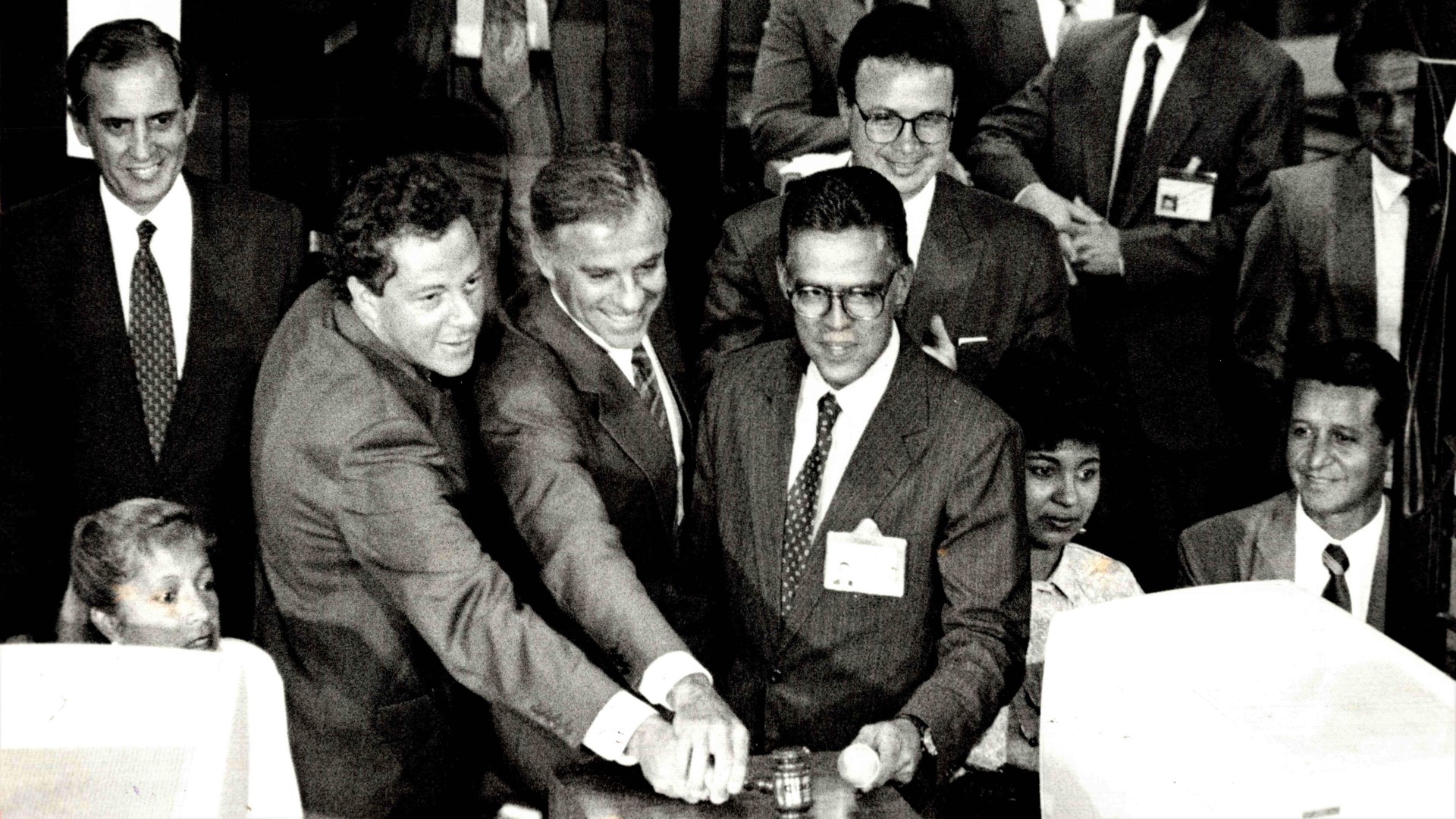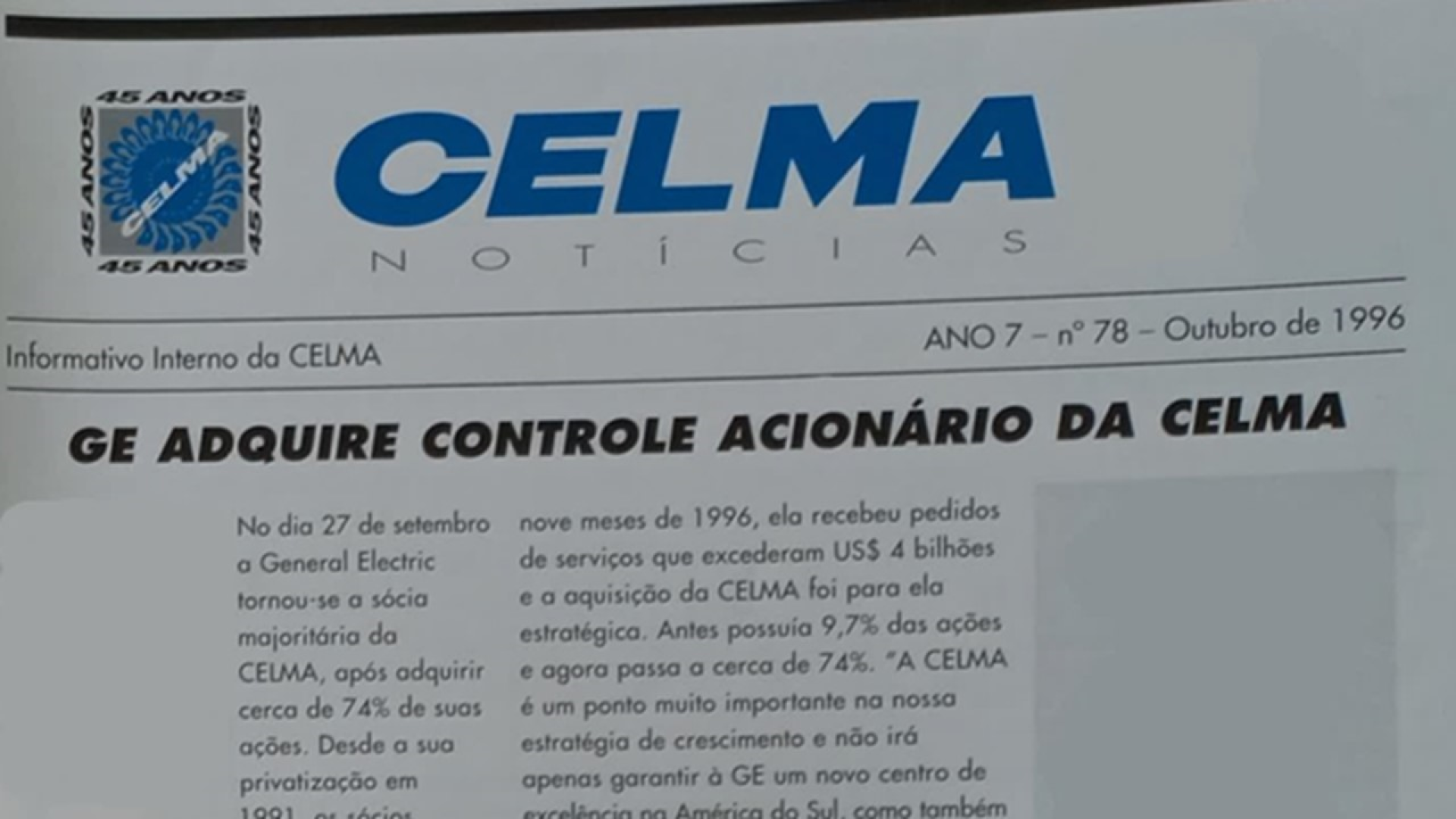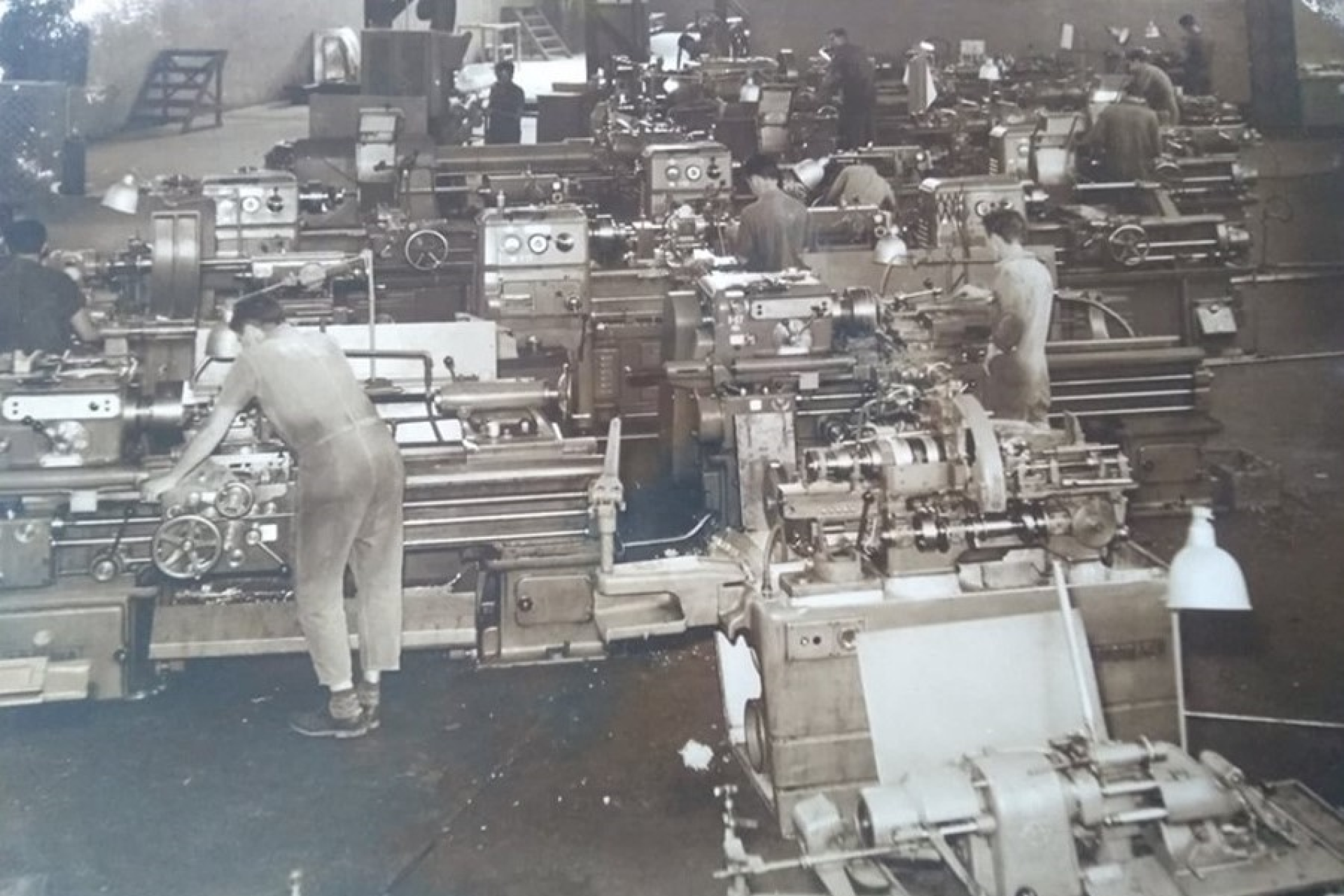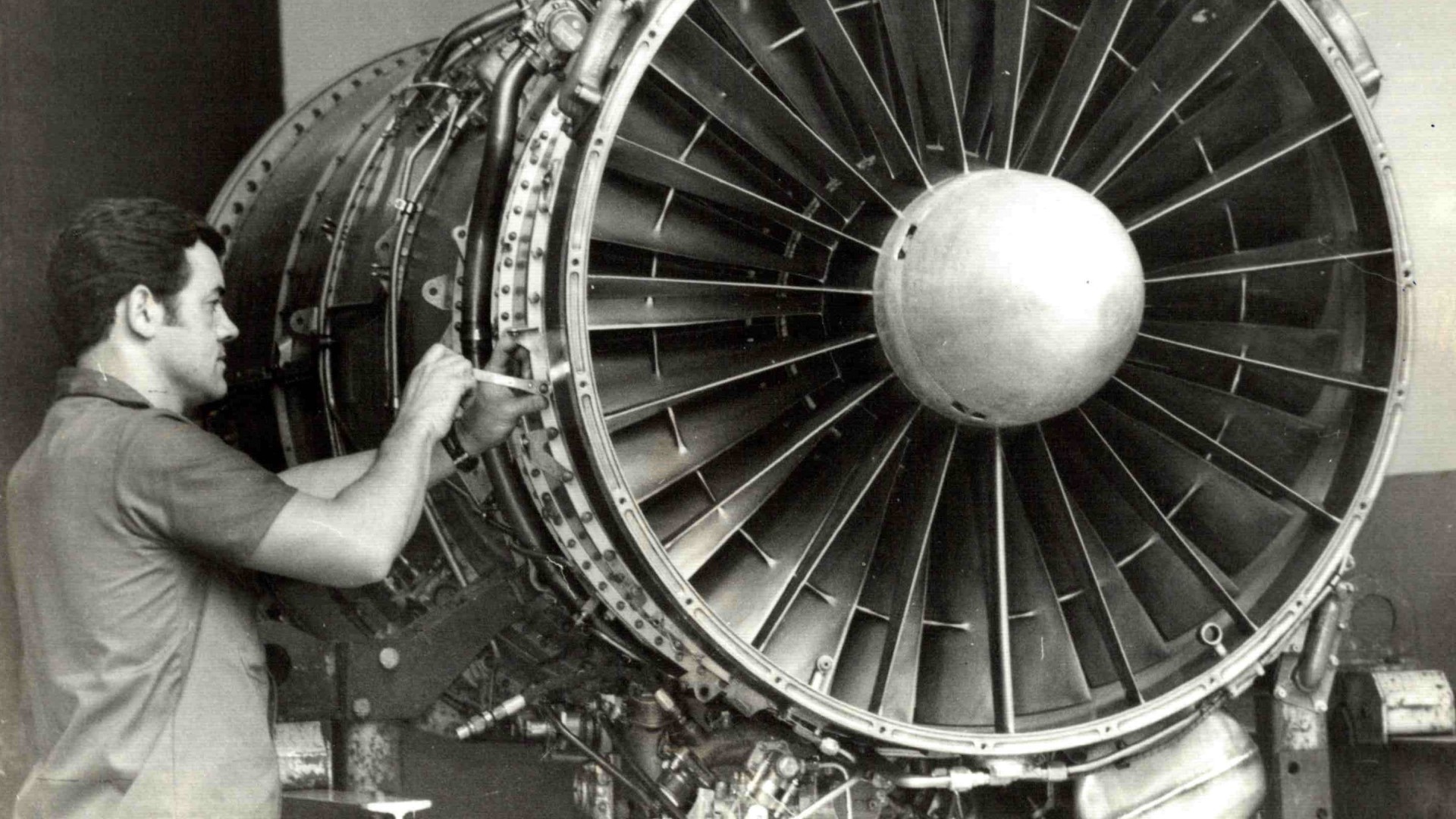GE Aerospace in
Latin America History

GE Aerospace’s legacy
The origins of our five-site Celma facility in Rio de Janeiro State, Brazil began in the early 1950s with an industrial manufacturing plant that later in the decade began servicing aircraft engines. This was soon followed by the launch of the region’s first test cells, establishing a strong technical base for future endeavors.
In the 1960s, the facility, which at the time was owned by the Brazilian Air Force, began to service and repair increasingly advanced aircraft engines, with growing expertise reflected in engine maintenance certification by the US Federal Aviation Administration (FAA).
The facility began overhauling aircraft engines in the 1970s, adding new workforce and production expertise, and solidifying its role as a major player in the Latin American aerospace industry.
At Celma, its technicians and engineers broadened their horizons in the 1980s by servicing additional engine models and beginning to manufacture critical parts for various engines and engine manufacturers.
In the 1990s, the focus shifted to expanding maintenance, repair, and overhaul (MRO) services for CFM International’s CFM56-3 engine*. The delivery of additional engine varieties and servicing of additional engines showcased Celma’s evolving capabilities.
In 1991, at the time Celma was privatized, GE Aerospace acquired a 10% stake. By 1996, it had acquired 100% of Celma, further solidifying its presence in the region.
In 1999, GE Aerospace in Mexico partnered with the Centro de Investigación y Asistencia Técnica del Estado de Querétaro (CIATEQ), part of Mexico's national research council (CONACYT), to establish the Centro de Ingeniería Avanzada en Turbomáquinas (CIAT) in Querétaro. This collaboration marked a significant deepening of aerospace engineering innovation in the region.
GE Aerospace marked a major milestone in the new millennium by repairing its 100th CFM56 engine for Southwest Airlines at Celma . This success was followed by the launch of the CFM56-7 engine program and the expansion of overhaul and testing capabilities for the CFM56-5B engine.
By 2000, CIAT in Mexico had transitioned to full GE Aerospace ownership, gaining independence from CONACYT. Three years later, the engineering center in Querétaro was honored with Mexico’s National Technology Prize, solidifying its reputation. 2006 saw the center’s first major project—installing an aeroderivative engine for ferry propulsion—and a year later, rapid growth prompted the creation of Universidad Aeronáutica en Querétaro (UNAQ) to meet the rising demand for talent.
The inauguration of the Querétaro campus, “El Refugio,” in 2011 was a pivotal moment, accompanied by the launch of the Power Electronics Lab. As the campus expanded in 2013 with new buildings and advanced facilities like the Avionics and Connected Aircraft Labs, the focus shifted toward innovation. By 2016, Querétaro had taken design ownership of the CF34 engine, marking a new chapter in its growth.
In 2016, GE Aerospace celebrated the opening of the 14 Bis MRO shop in Petrópolis, not far from the original Celma plant in Brazil, and the launch of the CF34-10E New Make Program. The facility also expanded its engine portfolio by adding overhaul capabilities for the CF6-6 engine and introducing GEnx-1B and 2B engine capacity. In 2018, the company opened the Três Rios test cell, one of the largest engine test cells in the world, further strengthening its testing capabilities in Latin America.
In the early 2020s, the Querétaro campus marked a significant step forward with the opening of the AVEOX Lab, strengthening its commitment to innovation.
By 2022, GE Aerospace partnered with UNAQ to open the ITAS (Sustainable Aerospace Technology Innovation Lab) in Querétaro, fostering university-industry collaboration in sustainable technology.
In 2024, the year that GE Aerospace launched as an independent company, the company inaugurated the Components Test Facility at UNAQ, further advancing our technological capabilities in the region.
In Brazil, the 2020s are marked by a significant expansion of MRO capabilities, highlighted by the opening of a new facility in Tres Rios, located in Rio de Janeiro State, Brazil, along with additional investments in developing the local workforce.
Today, GE Aerospace continues to lead the way in advancing aerospace technology, setting new standards, and shaping the future of flight in Latin America.
*CFM International is a 50/50 joint company between GE Aerospace and Safran Aircraft Engines



